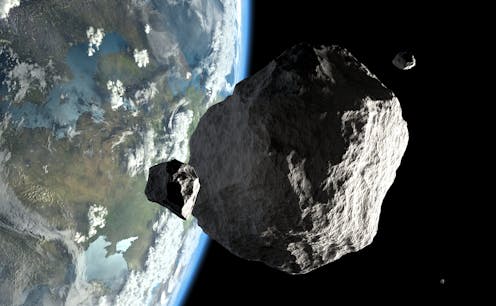Time and again, asteroid impacts on Earth have scarred the surface of the blue planet, leaving behind massive craters. These are called impact events where asteroids coming from space enter the earth's atmosphere and collides with the earth's surface. These impact events may release enough energy which may be equal to a nuclear bomb. In modern history, the Tunguska event in Russia is a good example which occurred in 1908. This particular impact event flattened and burned about 80 million trees in an 830 square mile forest. Most of the time, asteroids also leave a deep gaping depression on the earth's surface.
The B612 Foundation is a private nonprofit foundation with headquarters in the United States, dedicated to protecting Earth from asteroid strikes.As a non-governmental organization it has conducted two lines of related research to help detect asteroids that could one day strike Earth, and find the technological means to divert their path to avoid such collisions. Most of the time, asteroids also leave a deep gaping depression on the earth's surface. Most Destructive Asteroid Impacts in Human History. Experts and scientist researchers have stated that in the past 600 million years, about 60 asteroids or similar objects of 3 miles or larger in size have hit the earth.
- Sep 20, 2017 Asteroids are rocky worlds revolving around the sun that are too small to be called planets. They are also known as planetoids or minor planets. There are millions of asteroids, ranging in size.
- Asteroids are rocky objects primarily found in the asteroid belt, a region of the solar system that lies more than 2 ½ times as far from the Sun as Earth does, between the orbits of Mars and Jupiter. These objects are sometimes called minor planets or planetoids.
- The image above is Ceres taken from the Dawn spacecraft. Below is a table of information on selected asteroids, and at the bottom of the page are comments on the asteroids. Orbit values for epoch JD 2457400.5 (2016-01-13). Most of the values for mass and many of the diameter values are only rough estimates.
Most Destructive Asteroid Impacts in Human History
Experts and scientist researchers have stated that in the past 600 million years, about 60 asteroids or similar objects of 3 miles or larger in size have hit the earth. Three ground impact events on land have been determined to have caused the mass extinction of life on the planet. There is also known evidence of ocean impacts. Time and again, it has been debated whether ocean impact events could cause a mega tsunami or just a mantle plume (volcanism). The following asteroid impact events created huge craters in the past and may have affected life on earth. First on the list is the massive 118.061-mile radius Vredefort Crater located in Free State, South Africa, which hit 2 billion years ago. Second is the 80.7783-mile radius Sudbury Basin located in Ontario, Canada, which hit 1.8 billion years ago. Third is the 55.9234-mile radius Acraman Crater in South Australia, Australia which hit Earth 580 million years ago. The fourth is the 25-74.5645-mile radius Woodleigh Crater in Western Australia, Australia which hit 360 million years ago. Fifth is the 62.1371-mile radius Manicouagan Crater in Quebec, Canada, which hit 215 million years ago. Sixth is the 43.496-mile radius Morokweng Crater in North West, South Africa, which hit 145 million years ago. Seventh is the 40.3891-mile radius Kara Crater in Nenetsia, Russia, which hit 70.3 million years ago. Eighth is the 106-186.411-mile radius Chicxulub Crater in Yucatan, Mexico, which hit 65 million years ago. This particular impact event has been confirmed as having caused mass extinction on earth at that time. Ninth is the 62.1371-mile radius Popigai Crater in Siberia, Russia, which hit 35.7 million years ago. Tenth on the list but as destructive is the 52.8166-mile radius Chesapeake Bay Crater in Virginia, the United States, which hit 35 million years ago.


Asteroids That Have Hit Earth
Earth Impacts in the Future
Asteroids And Comets
In the possible event of an asteroid impact, the National Aeronautics and Space Administration (NASA) in the United States has a program called Sentry that uses the JPL Sentry System. It is a highly automated collision monitoring system that has been programmed to detect any future possibilities of an asteroid-earth collision. It also maintains and updates a catalog of asteroids that could hit the earth in the future. Among many negative things that some of these impact event collisions have triggered, the worst effects were the mass extinction events of life on earth. There is also a risk of future impact events that could cause huge natural upheavals like volcanism and mega tsunamis. There is also that possibility of a massive future hit that could trigger the shut down of the earth's magnetic field.